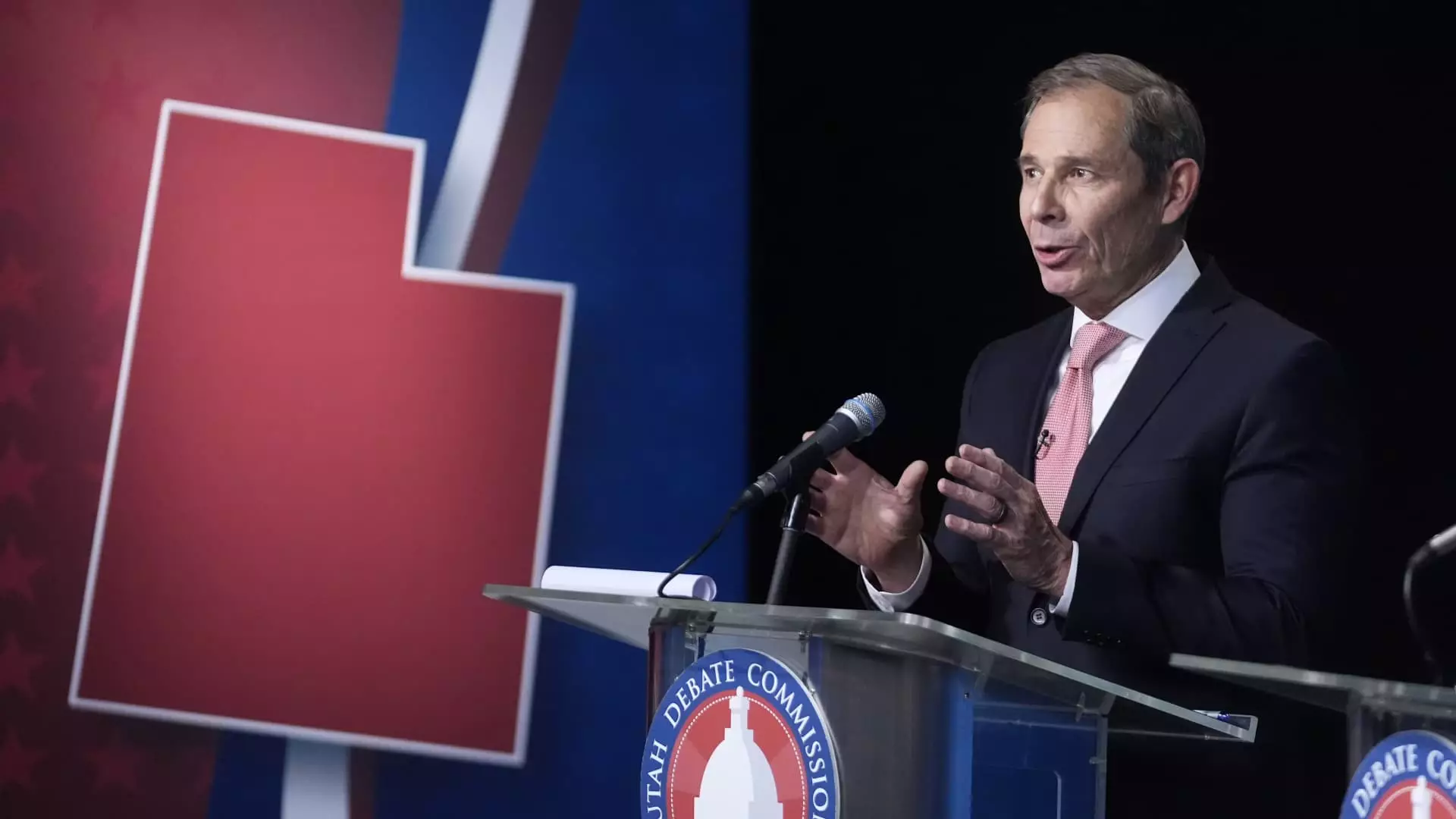The ascendance of cryptocurrency within political campaigns marks a relatively recent phenomenon that highlights a developing trend in the dynamics between emerging digital sectors and lawmakers. John Curtis, a Republican congressman from Utah, has emerged as a prominent figure supported by the crypto industry as he aims to replace Mitt Romney in the Senate. His journey to this position, which traverses an intriguing mix of telecom knowledge and legislative experience, reflects broader implications for how politics is shaped by technology.
Curtis’ path to political relevance in the cryptocurrency realm can be traced back to his experiences in telecommunications. At a recent event in Salt Lake City, he shared an anecdote that illustrates a troubling gap in understanding among lawmakers regarding technology. During a discussion about internet service provider speeds, Curtis posed a simple yet revealing question about whether his colleagues had ever run a speed test. The puzzled looks he received indicated a disconnect that Curtis believes is critical; this experience has driven his belief that lawmakers must engage more deeply with the technology they are tasked with regulating.
This initial epiphany led Curtis to recognize the necessity of cultivating a better understanding of user experiences in digital sectors, particularly in cryptocurrencies. He believes that without informed insight, lawmakers could impose regulations that stifle innovation, describing the unpredictability of regulations as a major detriment to the industry. His position resonates with many attendees of crypto-centric events, who see a direct link between political support and the future of their investments and technologies.
The financial backing that Curtis has received from the cryptocurrency community is quite striking. In his race against Democratic candidate Caroline Gleich, Curtis has garnered substantial contributions, with over $1.9 million from the Defend American Jobs PAC alone. These figures highlight an intense competition in which cryptos are interwoven with political funding, suggesting an increasing power of the digital asset industry to shape political landscapes.
This movement does not exist in isolation. As evidence suggests, the crypto industry now contributes to nearly half of all corporate donations in this election cycle, eclipsing traditional finance sectors such as banking and oil. Moreover, the impacts of such funding can be seen in the successes of the primary candidates supported by crypto-centric PACs, where approximately 86% have emerged successfully from their primaries.
As Curtis positions himself as a pro-crypto candidate, he emphasizes a core belief that the industry has a responsibility to self-regulate while proactively engaging with policymakers to ensure that legislation supports innovation rather than hampers it. Providing lawmakers with appropriate guardrails, he insists, will facilitate a balanced approach to regulation—one that prioritizes safety without resorting to heavy-handed measures that could hinder productivity within the crypto space.
Interestingly, Curtis is not operating in a vacuum. Numerous other candidates across the political spectrum are also aligning themselves with cryptocurrency interests, recognizing the young and bipartisan supporter base that numbers over 40 million Americans. This demographic exhibits a notable enthusiasm for political candidates advocating for the digital asset sector, indicating a burgeoning electoral force that lawmakers cannot afford to overlook.
Despite the bullish attitude within the industry, there are still significant challenges posed by established political figures who take a more adversarial stance toward cryptocurrency. One instance is disgruntlement directed at figures like Democratic Senator Elizabeth Warren, who is known for her critical comments about the sector. Here, the crypto industry’s investment strategy pivots toward supporting candidates who could potentially unseat those opposing crypto.
Take, for example, efforts to target Ohio Democratic Senator Sherrod Brown, who chairs the banking committee. With a dedicated $40 million earmarked for opposing him, the strategy encapsulates the broader objective of the crypto community: promoting pro-crypto candidates while actively campaigning against individuals aligned with negative perspectives on digital currencies.
As the 2024 elections draw nearer, it is evident that cryptocurrency will not only influence economic discussions but will also play a significant role in shaping political agendas. Figures like John Curtis exemplify a growing trend among politicians who recognize the inherent potential of digital assets and the necessity of aligning political ideologies with technological advancements. The resulting dynamics could redefine the relationship between public policy and innovative sectors in an increasingly digitized world, pointing to a future where the interests of cryptocurrency enthusiasts demand attention from influential lawmakers.

